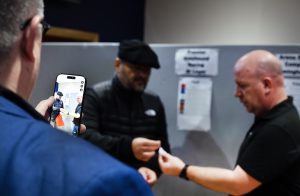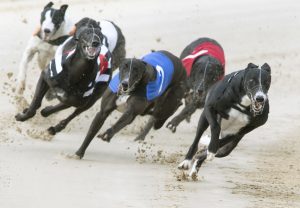Inside the Industry: How the new automated GBGB Trap Draw System works
Following the successful rollout of its new Racing Office System (ROS), the Greyhound Board of Great Britain (GBGB) has announced that all stadia can now conduct automated trap draws.
Part of GBGB’s wider Digital Transformation Programme, which is aimed at improving the efficiency and integrity of racing processes, the automated trap draw system allows the random and rule-compliant assignment of greyhounds to traps with no human input or interference.
Replacing the previously used ‘token draw method’ which involved the allocation of a numbered token to each participating greyhound, the automated system uses a cryptographically secure random generator to guarantee no predictable ordering and avoid bias.
How It Works
- Seeding Rules
Each greyhound is classified into a seeding category:- R – Railers, prefer lower-numbered traps.
- M – centre preference.
- W – Wide runners, prefer higher-numbered traps.
- Vacant Traps
- Traps without runners are marked as vacant.
- Random Shuffle
- Before assignment, all runners are shuffled using a secure random generator (Cryptographic RNG).
- This guarantees no predictable ordering and avoids bias.
- Trap Allocation
- Within each group, the system looks at which traps are available and valid:
- Railers are given the lowest-numbered traps available.
- Middles take traps in the middle.
- Wides take the highest-numbered traps.
- If more than one runner could fit into the same category, the system randomly assigns them to traps within that category.
Once draw happens, it is directly imported to race and all ability to change trap or delete them are locked. Only withdrawal is allowed. Racing Offices will only be able to draw each race once, with GBGB continuing to complete redraws when required. Transparency is also key when changes are being implemented and therefore all draws completed in this way will be flagged with a notice in the race card.
Concerned because your dog draws an unfavourable trap more than once? This is because traps are assigned according to seeding rules, not all trap positions are equally likely for every dog: For example, if there are 4 Railers and 2 other dogs, the Railers can only occupy the first 4 traps. The chance of a particular Railer ending up in Trap 1 is 1 in 4, not 1 in 6.
However, even though probabilities are constrained, you can still see streaks (like the same dog drawing Trap 4 multiple times). This is perfectly consistent with randomness — constrained probabilities make some sequences more likely, but all outcomes that follow the rules are possible.
Since the rollout of the system for one-off open races, the competition draw automated system has been developed and tested and will be released to racing offices in due course.


